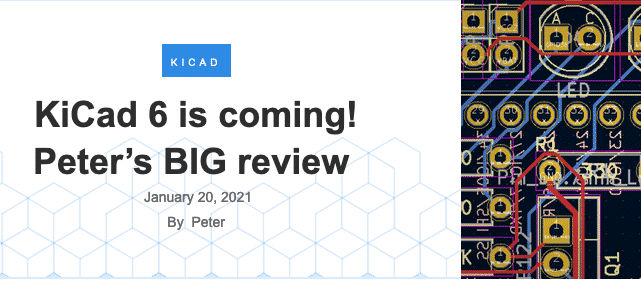KiCad 6 Guide series
Major Differences Between KiCad 6.0 And 5.0
KiCad 6 is a significant upgrade over KiCad 5. I'll highlight my top three most notable changes in KiCad 6 in this post.

Last Updated 1 year ago.
We publish fresh content each week. Read how-to's on Arduino, ESP32, KiCad, Node-RED, drones and more. Listen to interviews. Learn about new tech with our comprehensive reviews. Get discount offers for our courses and books. Interact with our community. One email per week, no spam; unsubscribe at any time


